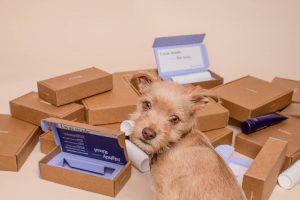There are about fifty poisonous plants with varying consequences for the dog. You must therefore be vigilant and watch your dog.
How to avoid poisoning by plants?
Normally, a dog’s diet contains enough fibre. It, therefore, does not need to feed on plants. However, some dogs have this habit, especially puppies who discover a lot by taste. It can also happen that adult doggies ingest it.
Be vigilant, and don’t let your dog ingest just any plant! Indeed, some are toxic or even fatal and can have serious consequences on the health of your four-legged animal.
You must therefore be vigilant and be familiar with the different plants in your environment at risk: house plants, garden or wild plants. It is also advisable to know the names of the different plants that you have as well as the wild plants that you can meet in your area.
As a precaution, it is better not to leave your plants at the disposal of your doggie. Consider raising them. Avoid buying very poisonous plants.
If you have poisonous plants, wash your hands after handling them. In your garden, try to protect them so as not to tempt your dog. You can also spray repellent on it to keep it away. When tending to your garden, remember to wear gloves or wash your hands when you’re done.
During your walks, watch your pooch and prevent him from eating plants or wildflowers.
What are the symptoms of poisoning? by plants?
Depending on the plants, the consequences can be very serious or even fatal.
In general, the following symptoms are observed:
digestive disorders: vomiting, significant salivation, diarrhoea, hemorrhagic gastroenteritis,
nervous disorders: paralysis, tremors, convulsions, coma …,
renal failure,
heart failure,
some plants contain latex. If your dog touches them, it can lead to gingivitis or conjunctivitis.
What to do if your dog ingests a poisonous plant?
If your dog has ingested a poisonous plant, immediately consult your veterinarian with the name of the plant. Before the consultation, carefully observe any change in your dog’s behaviour to report it to your doctor.
If your dog eats a plant and you are in doubt, collect a sample of that plant and contact your veterinarian or poison control centre.
If your dog has plant poisoning:
do not make him vomit,
do not give him food or drink,
do not give him medication without medical advice,
monitor its behaviour to let your veterinarian know.
If after a walk you notice that your dog is behaving unusually, consult your veterinarian immediately.
What plants or flowers are at risk?
There are about fifty poisonous plants. Among these, the most dangerous are:
the oleander,
the focus,
yew,
Laurel,
rhododendron,
thrush,
Holly,
the tulip,
the mistletoe,
yucca,
Liliaceae,
the philodendron.





